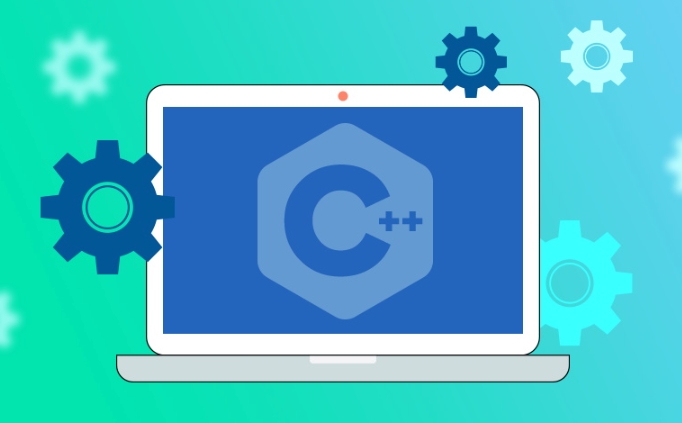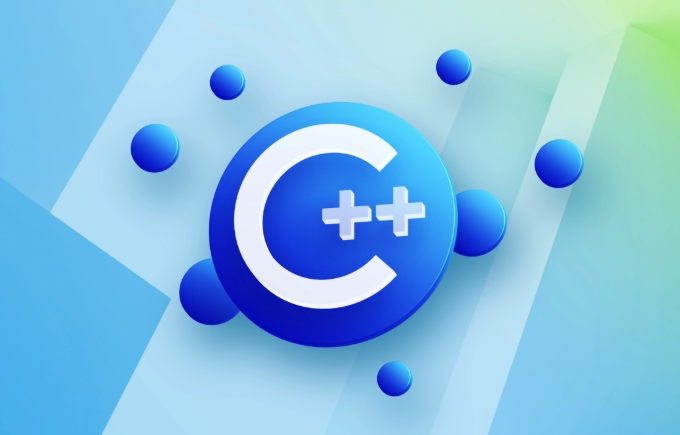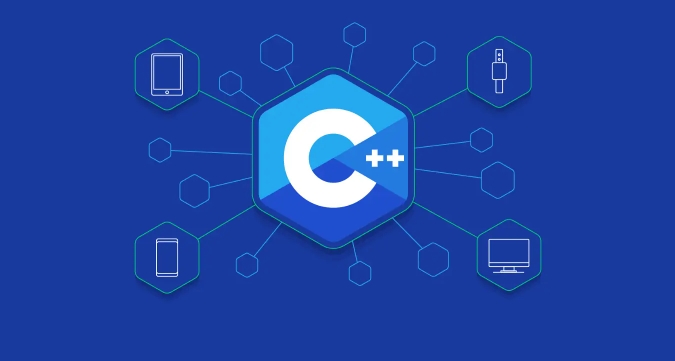C is usually faster than Python, especially in compute-intensive tasks. 1. C is a compiled language that directly runs machine code, while Python executes while interpreting and executing, which brings additional overhead; 2. C determines the type during compilation and manages memory manually, which is conducive to CPU optimization, and Python dynamic typing and garbage collection increase burden; 3. It is recommended to be used for high-performance scenarios such as game engines and embedded systems. Python is suitable for data analysis and rapid development scenarios that prioritize efficiency; 4. It is recommended to use time tools for performance testing, eliminate I/O interference, and average values multiple times to obtain accurate results.

C is usually faster than Python, especially in compute-intensive tasks. The reason is very simple: C is a compiled language that runs directly on the hardware; while Python is an interpreted language that runs in a virtual machine, which has additional overhead. But the specific gap depends on the usage scenario.

1. Compilation vs. Explanation: The fundamental source of performance differences
C will be compiled into machine code before running, and the program can execute instructions directly, with almost no additional burden on the runtime. Python executes while explaining and each run requires parsing code, type checking and other operations, which will bring considerable performance losses.

For example: A simple loop accumulation operation may only take a few milliseconds to complete in C, while a Python script with the same logic may take dozens or even hundreds of milliseconds.
So if the program you write requires a lot of repeated calculations (such as image processing, physical simulation), it would be more appropriate to use C.

2. Impact of type system and memory management
C supports manual memory control, and the variable type is determined at compile time, so that the CPU can better optimize the execution path. Python variables are dynamically typed, and new objects can be created every time they are assigned, and memory must be released by garbage collection mechanisms, which also slows down execution speed.
for example:
- Defining an integer
int a = 5;in C, the space occupied and operation are fixed. - In Python, even
a = 5is actually a complete object behind it, including reference counts, type information, etc., which occupies more memory and makes the operations more complicated.
This kind of "flexibility" comes at a cost, especially in scenarios where large data volumes or high-frequency calls are performed.
3. Selection suggestions in actual development
Although C is fast, not all situations are suitable for it:
-
Recommended use of C :
- Game engines, embedded systems, high-frequency trading and other fields that require extremely high performance
- Needs fine control of memory or hardware resources
- Long life cycle and high operation frequency
-
Recommended Python :
- Scenarios with priority development efficiency such as data analysis, AI modeling, scripting, etc.
- Rapid prototyping, algorithm verification
- Don't involve too many underlying computing tasks
Moreover, many tools (such as Cython or NumPy) can also make Python close to C in key parts, and it does not necessarily have to use C all.
4. Tips for performance testing
If you want to test the difference between the two yourself, there are a few tips:
- Use
timemodule or command line tools (such as time) to record execution time - Avoid introducing I/O operations (such as reading and writing files) in tests, otherwise it will affect the accuracy of comparison
- Multiple runs to average the value to avoid accidental factors
For example, you can write a function that calculates the Fibonacci sequence, which is implemented in C and Python respectively, and then it is time-consuming, and you will find that the gap is quite obvious.
Basically that's it. Both have their own advantages, and choosing the right language can result in twice the result with half the effort.
The above is the detailed content of C vs Python performance. For more information, please follow other related articles on the PHP Chinese website!

Hot AI Tools

Undress AI Tool
Undress images for free

Undresser.AI Undress
AI-powered app for creating realistic nude photos

AI Clothes Remover
Online AI tool for removing clothes from photos.

Clothoff.io
AI clothes remover

Video Face Swap
Swap faces in any video effortlessly with our completely free AI face swap tool!

Hot Article

Hot Tools

Notepad++7.3.1
Easy-to-use and free code editor

SublimeText3 Chinese version
Chinese version, very easy to use

Zend Studio 13.0.1
Powerful PHP integrated development environment

Dreamweaver CS6
Visual web development tools

SublimeText3 Mac version
God-level code editing software (SublimeText3)

Hot Topics
 Optimizing Python for Memory-Bound Operations
Jul 28, 2025 am 03:22 AM
Optimizing Python for Memory-Bound Operations
Jul 28, 2025 am 03:22 AM
Pythoncanbeoptimizedformemory-boundoperationsbyreducingoverheadthroughgenerators,efficientdatastructures,andmanagingobjectlifetimes.First,usegeneratorsinsteadofliststoprocesslargedatasetsoneitematatime,avoidingloadingeverythingintomemory.Second,choos
 Bioinformatics with Python Biopython
Jul 27, 2025 am 02:33 AM
Bioinformatics with Python Biopython
Jul 27, 2025 am 02:33 AM
Biopython is an important Python library for processing biological data in bioinformatics, which provides rich functions to improve development efficiency. The installation method is simple, you can complete the installation using pipinstallbiopython. After importing the Bio module, you can quickly parse common sequence formats such as FASTA files. Seq objects support manipulation of DNA, RNA and protein sequences such as inversion complementarity and translation into protein sequences. Through Bio.Entrez, you can access the NCBI database and obtain GenBank data, but you need to set up your email address. In addition, Biopython supports pairwise sequence alignment and PDB file parsing, which is suitable for structural analysis tasks.
 python connect to sql server pyodbc example
Jul 30, 2025 am 02:53 AM
python connect to sql server pyodbc example
Jul 30, 2025 am 02:53 AM
Install pyodbc: Use the pipinstallpyodbc command to install the library; 2. Connect SQLServer: Use the connection string containing DRIVER, SERVER, DATABASE, UID/PWD or Trusted_Connection through the pyodbc.connect() method, and support SQL authentication or Windows authentication respectively; 3. Check the installed driver: Run pyodbc.drivers() and filter the driver name containing 'SQLServer' to ensure that the correct driver name is used such as 'ODBCDriver17 for SQLServer'; 4. Key parameters of the connection string
 python collections counter example
Jul 28, 2025 am 01:14 AM
python collections counter example
Jul 28, 2025 am 01:14 AM
collections.Counter is used to count element frequency, 1. It can count list elements such as Counter(['apple','banana','apple']) and output Counter({'apple':3,'banana':2,'orange':1}); 2. It can count string characters such as Counter("helloworld") and output Counter({'l':3,'o':2,'h':1,'e':1,'w':1,'r':1,'d':1}); 3. Use most_common(n) to obtain the first n most common elements
 C binary search tree example
Jul 28, 2025 am 02:26 AM
C binary search tree example
Jul 28, 2025 am 02:26 AM
ABinarySearchTree(BST)isabinarytreewheretheleftsubtreecontainsonlynodeswithvalueslessthanthenode’svalue,therightsubtreecontainsonlynodeswithvaluesgreaterthanthenode’svalue,andbothsubtreesmustalsobeBSTs;1.TheC implementationincludesaTreeNodestructure
 C fold expressions example
Jul 28, 2025 am 02:37 AM
C fold expressions example
Jul 28, 2025 am 02:37 AM
C folderexpressions is a feature introduced by C 17 to simplify recursive operations in variadic parameter templates. 1. Left fold (args...) sum from left to right, such as sum(1,2,3,4,5) returns 15; 2. Logical and (args&&...) determine whether all parameters are true, and empty packets return true; 3. Use (std::cout
 What is statistical arbitrage in cryptocurrencies? How does statistical arbitrage work?
Jul 30, 2025 pm 09:12 PM
What is statistical arbitrage in cryptocurrencies? How does statistical arbitrage work?
Jul 30, 2025 pm 09:12 PM
Introduction to Statistical Arbitrage Statistical Arbitrage is a trading method that captures price mismatch in the financial market based on mathematical models. Its core philosophy stems from mean regression, that is, asset prices may deviate from long-term trends in the short term, but will eventually return to their historical average. Traders use statistical methods to analyze the correlation between assets and look for portfolios that usually change synchronously. When the price relationship of these assets is abnormally deviated, arbitrage opportunities arise. In the cryptocurrency market, statistical arbitrage is particularly prevalent, mainly due to the inefficiency and drastic fluctuations of the market itself. Unlike traditional financial markets, cryptocurrencies operate around the clock and their prices are highly susceptible to breaking news, social media sentiment and technology upgrades. This constant price fluctuation frequently creates pricing bias and provides arbitrageurs with
 python pandas melt example
Jul 27, 2025 am 02:48 AM
python pandas melt example
Jul 27, 2025 am 02:48 AM
pandas.melt() is used to convert wide format data into long format. The answer is to define new column names by specifying id_vars retain the identification column, value_vars select the column to be melted, var_name and value_name, 1.id_vars='Name' means that the Name column remains unchanged, 2.value_vars=['Math','English','Science'] specifies the column to be melted, 3.var_name='Subject' sets the new column name of the original column name, 4.value_name='Score' sets the new column name of the original value, and finally generates three columns including Name, Subject and Score.






